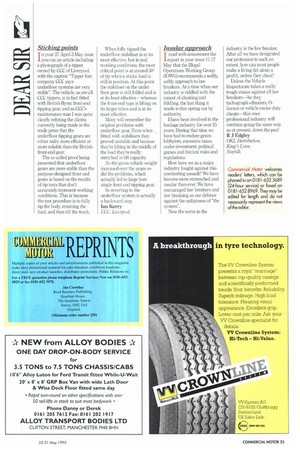Sticking points
Page 27

If you've noticed an error in this article please click here to report it so we can fix it.
In your 27 April-3 May issue you ran an article including a photograph of a tipper owned by CCC of Liverpool, with the caption "Tipper hire company CCC says underfloor systems are very stable". The vehicle, as are all CCC tippers, is in fact fitted with British Hytec front-end tipping gear, and as CCCs maintenance man I was quite clearly refuting the claims currently being made in the trade press that the underfloor tipping gears are either safer, more efficient or more reliable than the British front-end gear.
The so called proof being presented that underfloor gears are more stable than the purpose-designed front end gears is based on the results of tip tests that don't accurately represent working conditions. This is because the test procedure is to fully tip the body, retaining the load, and then tilt the truck. When fully tipped the underfloor stabiliser is at its most effective, but in real working conditions, the most critical point is at around 30' of tip when a sticky load is still in position. At this point the stabiliser on the underfloor gear is still folded and is at its least effective—whereas the front-end type is lifting on its larger tubes and is at its most effective.
Many will remember the original problems with underfloor gear. Even when fitted with stabilisers they proved unstable and because they're lifting in the middle of the load they're really stretched in lift capacity.
As the gross vehicle weight increased over the years so did the problems, which actually led to large bore single front end tipping gear.
So reverting to the underfloor system is actually a backward step.
Ian Kerry CCC Liverpool
































































































